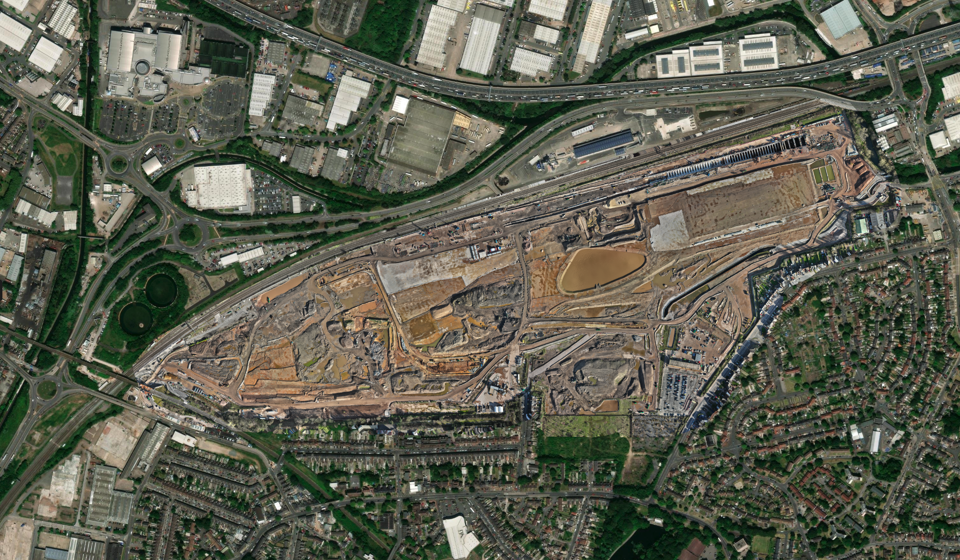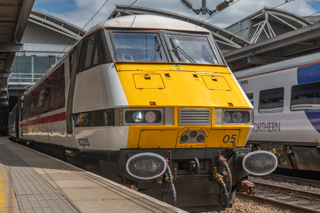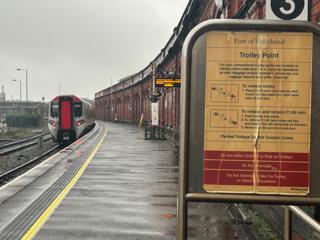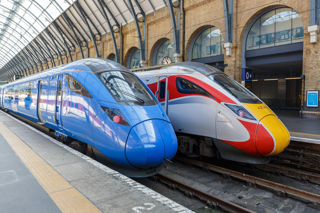Having closed several years ago, the site of the old Metro-Cammell factory at Washwood Heath will soon have a new railway use, housing a major HS2 train depot. Peter Plisner visits the site to find out how work’s progressing.
It’s a site that’s steeped in railway history. The factory that stood at Washwood Heath, about a mile outside Birmingham city centre, was the place where (most recently, under the ownership of Alstom) the Class 390 Pendolino tilting trains were assembled.
Having closed several years ago, the site of the old Metro-Cammell factory at Washwood Heath will soon have a new railway use, housing a major HS2 train depot. Peter Plisner visits the site to find out how work’s progressing.
It’s a site that’s steeped in railway history. The factory that stood at Washwood Heath, about a mile outside Birmingham city centre, was the place where (most recently, under the ownership of Alstom) the Class 390 Pendolino tilting trains were assembled.
But under its original name, Metro-Cammell, it built trains for railways and metro systems all over the world.
Opened in 1863 as the Metropolitan Railway Carriage and Wagon Company, it built carriages for a variety of the early railways, and later became the builder of choice for the London Underground.
Even trains running on the Glasgow Subway still bear the company’s name, although not for long as the old 1980s rolling stock is currently being replaced.
The list of new trains to emerge from the factory represents a roll call of classics - including the striking Blue Pullmans and the much-loved 1938 Tube stock, retired from London in 1988 and only recently replaced, after a spell on the Isle of Wight.
But Metro-Cammell wasn’t the only transport operation in the area. Next door was the van maker LDV. One of the last parts of the old British Leyland empire, the company made vehicles that, like the trains, were exported around the globe.
LDV was acquired by the Russian GAZ Group in 2006, with the promise of more investment. But despite additional funding, under GAZ’s ownership, output didn’t increase, partly because of a severe worldwide recession at the time.
That appears to have led to a lack of long-term investment, and production was suspended in December 2008. The company quickly went into administration.
The closure of both factories left hundreds out of work and a vast area derelict.
But the HS2 project looks set to change all that. Spanning 65 hectares (equivalent to 100 football pitches), the land that was left has proved to be an ideal site for HS2’s train maintenance building and Network Integrated Control Centre.
Both operations will be at the heart of the high-speed line’s operation from London to Birmingham and will create hundreds of new jobs.
The maintenance building will be the primary hub of operations within the site. It will be used to maintain the HS2 train fleet along with facilities to store materials and equipment.
Around 250 people will work in the building - including facilities management, fleet management, production, cleaning, and depot drivers. There will also be a large stabling yard located towards the west side of the depot site to house trains when not in operation.
Meanwhile, the Network Integrated Control Centre (NICC) that will oversee the entire HS2 network will be located centrally within the Washwood Heath depot site.
It is planned to be a standalone building, designed to accommodate the operational and management functions of the HS2 network. More than 100 staff will be based at the NICC.
The site also houses the west portal of the Bromford Tunnel, which helps HS2 trains reach Birmingham City Centre.
It’s all meant that contractors have had to work around each other on what is a busy site.
“It’s been challenging, and we’ve had to phase the work,” says Damian Wheeler, head of Washwood Heath for HS2 Ltd.
“Obviously, the civil engineering work is happening now. The tunnel portal is well on the way to construction. We’ve come to a point now where the site transitions from heavy civil to the depot construction. And once the depot is built, we will hand back the remainder of the land for commercial development.”
Land not required for the high-speed line will eventually be handed back to Birmingham City Council, which is expected to build warehouses that might perhaps house some of the supply chain companies involved in the operation of the high-speed line.
“We’ve designed the depot as operationally efficient as we can, to minimise the land-take required for the site. Handing back the land should help create even more jobs for the local community,” says Wheeler.
The initial task (now broadly complete) was to prepare the site for its new use.
Having been used for major engineering operations by both Alstom and LDV, the site had been left heavily contaminated.
Work started on the redundant site back in 2020. Tim Cook, project manager for Balfour Beatty VINCI (BBV), explains: “We’ve cleaned it. We’ve done a lot of on-site bio-remediation. We’ve also done a re-profiling exercise where we’ve basically levelled the site out for the actual depot, which is about 45 hectares.”
The plan is to build a ‘platform’ on which the depot and control centre will sit. Much of the material being used for the platform has been recycled to prevent taking contaminated material off-site.
Cook says: “We’re reusing what’s here to try to limit our impact elsewhere on the project or in Birmingham. It’s also helping to keep traffic off the roads as well. We are partially in a residential area, so it’s quite difficult. The access is very limited, with the Derby rail line on the north side as well.”
Where possible, HS2 has been trying to use local companies, and for the earthworks a Coventry-based firm has been hired.
It has had around 1.6 million cubic metres to excavate, and the majority of that will be used to create the platform, while around 400,000 cubic metres will be transported off-site and used for another part of the HS2 project.
Says Cook: “We’re reusing everything that we’ve got here, be it at Washwood Heath or when we get down to the deeper excavations, when we are into virgin material which is clean.
“That material can then be transported to another part of the project. Anything that’s contaminated stays here.”
By recycling and reusing material on the site, BBV has eliminated the need to import aggregate, a strategy that has kept more than 50,000 lorry movements off local roads, minimising the impact of HS2’s work on nearby communities.
Cook acknowledges that the site was quite contaminated: “We’ve dealt with a lot of hydrocarbons in the soil. We’ve also had asbestos in the soil.
The area where contractors are digging is also classed as a medium risk for unexploded wartime bombs, although thankfully they’ve not found any.
But they have found several tunnels, particularly underneath what was the Alstom factory.
“You could see a network of what we think were Second World War tunnels,” says Cook.
“We think they were used to transport materials around the factory site. There are also some old air raid shelters you can see in some of the retaining walls surrounding the site. It’s all great urban history.”
Decontamination of the site has taken place alongside construction for a huge cutting where the Bromford Tunnel emerges.
It dives underground in Water Orton in north Warwickshire, some three and a half miles away, and emerges close to where the depot and control centre will be.
Early plans for the route had the line running on the surface, but HS2 decided that it would be better if it was underground.
Two 1,600-tonne tunnel boring machines (TBMs) will dig the tunnel.
Mary Ann is already in operation, and it will be joined by Elizabeth when it starts its journey towards Birmingham later this year.
It is expected to take 16 months to bore the tunnels and the nearly two million tonnes of spoil dug out of the tunnels will be used at nearby sites.
Mary Ann is expected to break through the portal wall at Washwood Heath by the end of 2024, with Elizabeth set to finish its drive by autumn 2025.
Washwood Heath is the deepest of four tunnel portals on the Midlands section of the HS2 route. A two-year programme of ground reinforcement works, delivered by the Bachy Soletanche and Balfour Beatty Ground Engineering joint venture (known as SB3), began in November 2021 to prepare for the portal’s excavation.
The portal is at the start of a 750-metre-long cut and cover structure. This is where HS2 trains will emerge from the tunnel and travel below ground level, before heading for Birmingham’s Curzon Street station.
Construction of the portal has required the setting-up of a special concrete batching plant.
Cook explains: “We decided to have our own batching plant here, again to try to minimise disruption to the local infrastructure. It also helps to guarantee on-time delivery, something that’s crucial with a big construction project such as ours.”
The spoil from the cutting has been transported on specially built haul roads to support construction of the Delta Junction, a triangular section of 13 viaducts in north Warwickshire.
The decision to build a tunnel that emerges next to the depot has meant two separate operations taking place on the site almost simultaneously.
It’s clearly added further logistical problems, although by mid-May both projects on the Washwood Heath site appeared to be well on schedule.
Inside the cutting, you could clearly see where the two TBMs will emerge, and a concrete slab to take the tracks was beginning to be constructed.
Elsewhere, contractors were excavating other parts of the 22-metre-deep cutting. The work was being done in steps to minimise any pressure on the retaining walls.
Cook says: “We are constantly monitoring the deflection of the walls. They are made of very thick concrete, but we still need to monitor them and check they are behaving as expected. We’re monitoring movement, we’re monitoring water pressures, we’re monitoring everything as we continue digging down.”
The cutting that’s been left is an impressive feat of engineering, as are many other parts of the HS2 project.
After leaving the depot area, the line dives under an existing railway line and then starts ascending towards its termini at Birmingham’s Curzon Street.
Even the route into the new station isn’t without its issues. Mainly above ground on a series of viaducts, the line has to be weaved above and around other existing lines - including the West Coast Main Line.
Back at Washwood Heath, contracts for the depot and control centre have yet to be let, although that is expected soon.
After laying derelict for so long, having been used in the past for transport-related industries, Washwood Heath’s rebirth for HS2 is seen as an ideal regeneration of the historic site.
To read more aticles like this complete with all images, Subscribe today and never miss an issue of RAIL. With a Print + Digital subscription, you’ll get each issue delivered to your door for FREE (UK only). Plus, enjoy an exclusive monthly e-newsletter from the Editor, rewards, discounts and prizes, AND full access to the latest and previous issues via the app.
Login to continue reading
Or register with RAIL to keep up-to-date with the latest news, insight and opinion.

















Login to comment
Comments
No comments have been made yet.